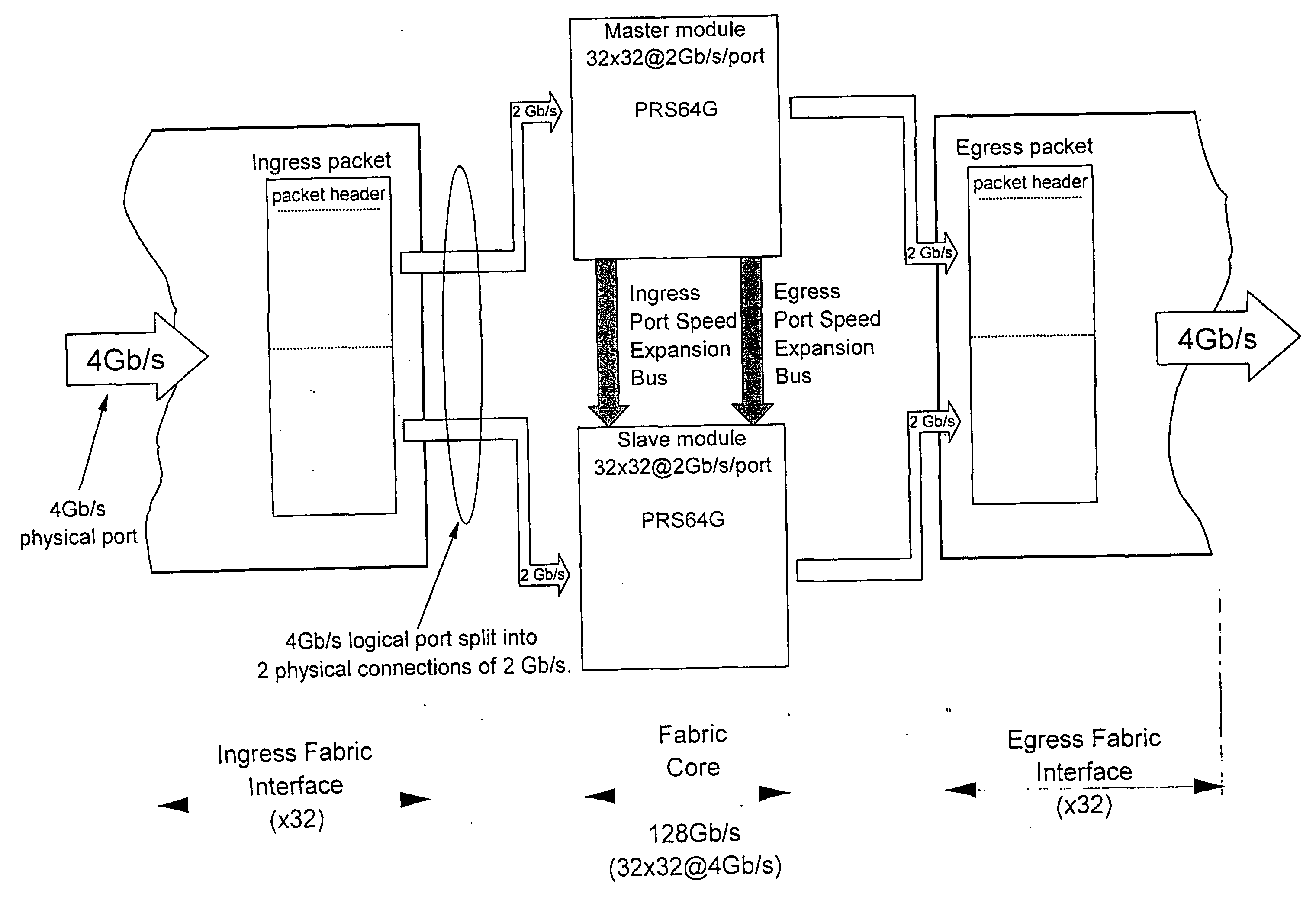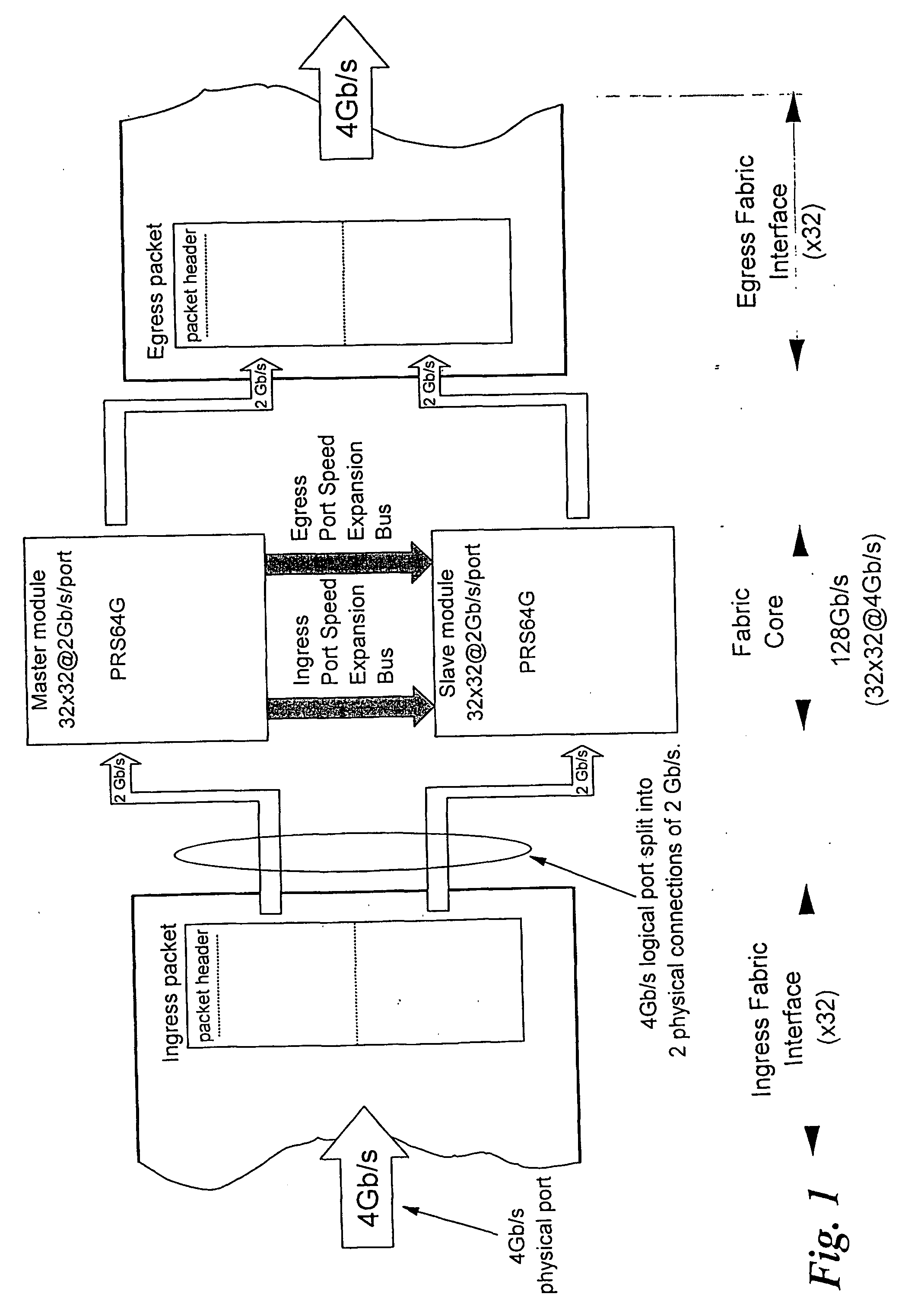Method and arrangement for local sychronization in master-slave distributed communication systems
a distributed communication system and master-slave technology, applied in data switching networks, time-division multiplexing selection, multiplex communication, etc., can solve the problems of requiring some complexity overhead, is not easy to achieve, and is generally more complex and less efficient than single-stage switches. achieve maximum throughput, ample time, and high bandwidth
- Summary
- Abstract
- Description
- Claims
- Application Information
AI Technical Summary
Benefits of technology
Problems solved by technology
Method used
Image
Examples
Embodiment Construction
[0036] With general reference to the figures and with special reference now to FIG. 3, a general communication system 30 that transports data entities, hereafter called packets, is considered. Beyond certain stringent requirements of size or performance, parallelism is sometimes the only feasible solution in any given technology.
[0037] Parallelism can be achieved by partitioning and distribution of the system. The combined functionality of the distributed parts 30-1 to 30-N, is identical to the functionality of the original system 30. Therefore a packet 31 is also partitioned (into segments) and transported through the communication system by processing different parts of the packet in different parts of the system. Partitioning of the system and the packet is depicted in the lower part of FIG. 3. A typical example of such a parallel system is the case where M=N and each segment of a packet is processed by a corresponding part of the communication system.
[0038] Segmentation of the...
PUM
 Login to View More
Login to View More Abstract
Description
Claims
Application Information
 Login to View More
Login to View More - R&D
- Intellectual Property
- Life Sciences
- Materials
- Tech Scout
- Unparalleled Data Quality
- Higher Quality Content
- 60% Fewer Hallucinations
Browse by: Latest US Patents, China's latest patents, Technical Efficacy Thesaurus, Application Domain, Technology Topic, Popular Technical Reports.
© 2025 PatSnap. All rights reserved.Legal|Privacy policy|Modern Slavery Act Transparency Statement|Sitemap|About US| Contact US: help@patsnap.com



